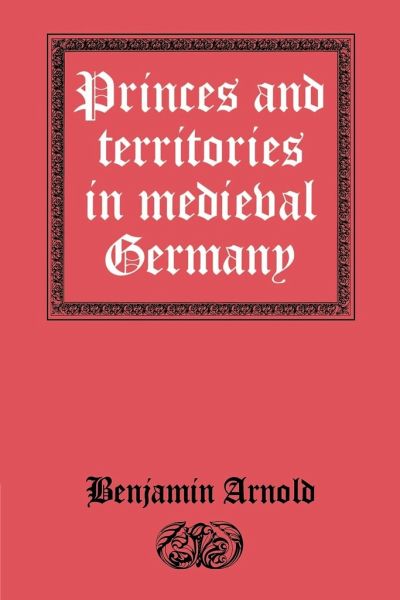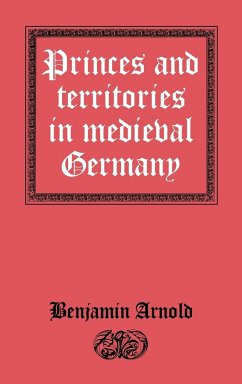
Princes and Territories in Medieval Germany

PAYBACK Punkte
25 °P sammeln!
A powerful analysis of regional power, filling a major gap in English language writing on medieval Germany.This book addresses the most important question in pre-modern German political history: why did a multiplicity of states and territories emerge by the end of the Middle Ages instead of an incipient 'nation state' under the crown? The answer is found not in the supposed failures of German kingship, but instead in the creative aristocratic successes of the secular dynasties and princes of the Church. We see how their collective efforts in the centuries after 1050 added up to a more markedly...
A powerful analysis of regional power, filling a major gap in English language writing on medieval Germany.
This book addresses the most important question in pre-modern German political history: why did a multiplicity of states and territories emerge by the end of the Middle Ages instead of an incipient 'nation state' under the crown? The answer is found not in the supposed failures of German kingship, but instead in the creative aristocratic successes of the secular dynasties and princes of the Church. We see how their collective efforts in the centuries after 1050 added up to a more markedly territorial structure of regional power, already emerging by the thirteenth century as a result of their endeavours in the economy, internal and external colonization, and the establishment of new castles, towns, monasteries and communications; in local, ecclesiastical and imperial law, and the jurisdictional reform which they imposed in their regions; and in the uses of dynastic politics, including feuds as well as alliances, inheritance and partition.
Table of content:
Acknowledgements; List of abbreviations; Introduction; Part I. Crown and Prince: 1. German regal institutions and the princely order in the twelfth and thirteenth centuries; 2. The crown, its rights, and the princes; 3. Was there a 'rise of territorial lordship'?; Part II. Princely Title and Office: 4. The imperial house; German bishops and abbots; 5. Dukes and duchies; 6. Counts and the transformation of countries; 7. Margraves, counts-palatine, burgraves, and landgraves; Part III. Dynasties, Prelates, and Territorial Dominion: 8. From consanguinity to dynasty?; 9. Material foundations: colonization, forest, towns, and communications; 10. The reform of regional jurisdictions in the twelfth and thirteenth centuries; 11. The anatomy and nomenclature of princely dominion, 1150-1330; 12. Feuds, inheritance, and partition; 13. Region and territory: effects and outcome; Conclusion; Index.
This book addresses the most important question in pre-modern German political history: why did a multiplicity of states and territories emerge by the end of the Middle Ages instead of an incipient 'nation state' under the crown? The answer is found not in the supposed failures of German kingship, but instead in the creative aristocratic successes of the secular dynasties and princes of the Church. We see how their collective efforts in the centuries after 1050 added up to a more markedly territorial structure of regional power, already emerging by the thirteenth century as a result of their endeavours in the economy, internal and external colonization, and the establishment of new castles, towns, monasteries and communications; in local, ecclesiastical and imperial law, and the jurisdictional reform which they imposed in their regions; and in the uses of dynastic politics, including feuds as well as alliances, inheritance and partition.
Table of content:
Acknowledgements; List of abbreviations; Introduction; Part I. Crown and Prince: 1. German regal institutions and the princely order in the twelfth and thirteenth centuries; 2. The crown, its rights, and the princes; 3. Was there a 'rise of territorial lordship'?; Part II. Princely Title and Office: 4. The imperial house; German bishops and abbots; 5. Dukes and duchies; 6. Counts and the transformation of countries; 7. Margraves, counts-palatine, burgraves, and landgraves; Part III. Dynasties, Prelates, and Territorial Dominion: 8. From consanguinity to dynasty?; 9. Material foundations: colonization, forest, towns, and communications; 10. The reform of regional jurisdictions in the twelfth and thirteenth centuries; 11. The anatomy and nomenclature of princely dominion, 1150-1330; 12. Feuds, inheritance, and partition; 13. Region and territory: effects and outcome; Conclusion; Index.














